| | 
‘Beautiful Savior,’ a centuries-old favorite, is a fitting hymn for the Christmas season. The poetic language describes the Savior’s birth as the son of God and the son of man (mankind), which evokes the account of Mary’s conception and Jesus’ birth in the Bethlehem stable. The language describing him as being fair and pure can be applied literally to an image of him as a sweet baby and to his adult character and ministry.
The Bible tells us that Jesus was not extraordinarily handsome. Isaiah’s prophecy says that he would not be comely or desired for his beauty. The New Testament record tells us that he did not stand out in a crowd because of his physical attributes; it required Judas’ kiss and his own affirmation to identify him to the band of men who came to arrest him. The hymn refers to elements of the earth and sky as “fair” and it is evident that the definition intended is that of ‘beautiful’, or ‘pleasing to the eye.’ However, we can look to other definitions of the word “fair” to give added meaning in the hymn’s comparison of the Savior: flawless, clean, clear, fine, ample, marked by impartiality and honesty, just, free from self-interest, prejudice or favoritism. The hymn is an appropriate reminder at the Christmas season that the Lord does not look on the outward appearance, but on the heart. He himself set that example. Although he was the creator of all the beautiful things described in the hymn and holds the world in his hands as the Lord of lords, he allowed himself to come into the world in the most humble of circumstances. As we sing of giving him praise, honor and glory, we can picture ourselves offering these gifts at the manger. The original German text is said to have first been published about 1677 in the Roman Catholic “Münster Gesangbuch” (Münster Hymnbook) and had five verses. It is assumed that Münster refers to the city of that name in northwestern Germany. In the photo below of an original book owned by the Universität Münster the text and arrangement of the verses can be seen to be different than many are accustomed to in the current English hymnals, however, the essential elements of the message are present, as noted in the direct translation shown below. The heading of the page refers to the text as being a ‘new song.’ 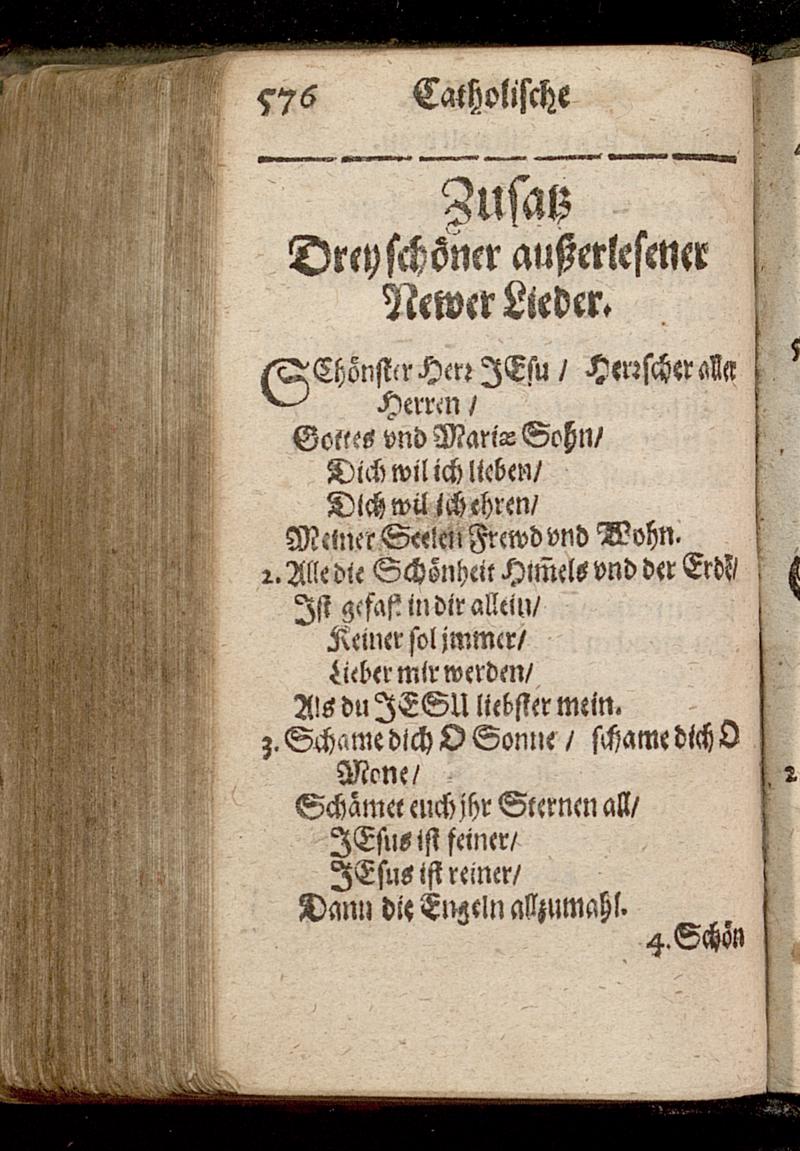
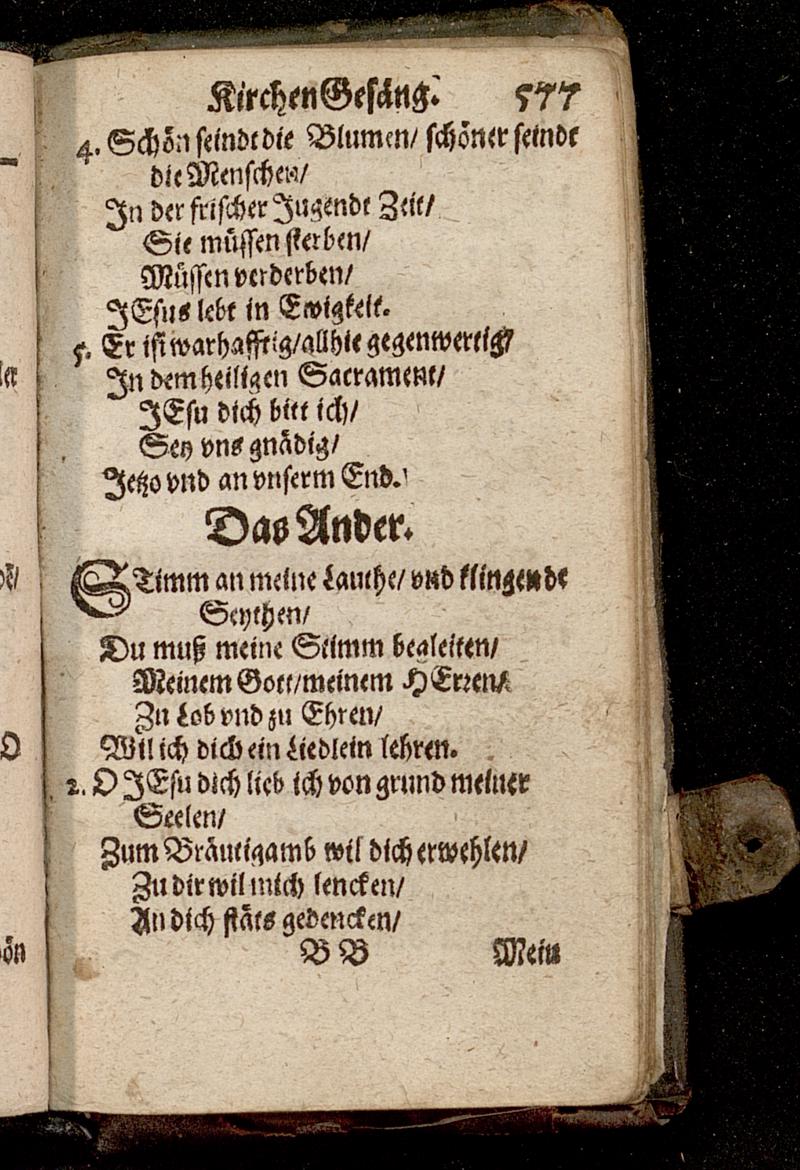
Schönster Herr Jesu, (Most beautiful Lord Jesus) Herrscher aller herren, (Lord of all Lords) Gottes und Mariae sohn, (God and Mary’s son) Dich wil ich lieben, (Thee will I love) Dich wil ich ehren, (Thee will I honor) Meiner seelen frewd und wohn. (My soul’s joy and home) Alle die Schönheit (All the beauty) Himmels und der erde (Heaven and the earth) Ist gefast in dir allein (Is found in You alone) Keiner sol immer (None such ever) Lieber mir werden (Better to me become) Als du Jesu liebster mein (As you Jesus dearest mine) Schame dich O sonne (Shame to you, oh sun) Schame dich O mone (Shame to you, oh moon) Schämet euch ihr sternen all (Shamed are you the stars all) Jesus ist feiner (Jesus is finer) Jesus is reiner (Jesus is purer) Dann die Engeln allzumahl (Than the angels all together) Schön seindt die blumen, (Beautiful are the flowers) Schöner seindt die menschen, (More beautiful are the people) In der frisher jugendt zeit, (In the fresh youth time) Sie müssen sterben, (They must die) Müssen verderben, (Must corrupt) Jesus lebt in Ewigkeit. (Jesus lives in eternity.) Er ist warhafftig, (He is truly) Allhie gegenwertig, (There present) In dem heiligen Sacrament, (In the hallowed Sacrament) Jesu dich bitt ich (Jesus you beg I) Sey uns gnädig, (Be to us gracious) Jetzo und an unserm end. (Now and to our end.) It is said that seventy years after its first appearance, a slightly revised version appeared in a Jesuit publication, ‘Geistliches Psälterlein’ (1747). Nearly one hundred years after this, the hymn resurfaced in the early nineteenth century, as August H. Hoffman von Fallersleben, a language professor and librarian at the University of Breslau, (now Wroclaw) influenced by the philosophy of the time in researching and preserving the art of the common people, began compiling folk songs of the region. In 1842 he published in Leipzig, “Schlesische Volkslieder” (Silesian Folksongs), which contained the text with a number of alterations and was given the title of the first line,“Schönster Herr Jesu” (Most beautiful Lord Jesus). It is said that this version was submitted by a student from the village of Reyersdorf or Radochów, Poland. The “Schlesische Volkslieder” volume was the basis of Richard S. Willis’ translation of the hymn into English in his 1850 publication, ‘Church Chorals and Choir Studies’ and was titled “Fairest Lord Jesus.” German immigrants also brought their original German hymnals to the United States and in 1873 the General Council of the Evangelical Lutheran Church in North America published in their ‘Sunday School Book’ a translation by Joseph A. Seiss titled “Beautiful Savior.” Many modern versions of the hymn are combinations of these two translations, but the two different titles have been perpetuated. Unlike the text, which has many variations, and many other hymns of antiquity, only two hymn tunes are associated with the text. The tune associated with original German text is known as Schönster Herr Jesu. The tune more familiar today is known as Crusader’s Hymn or ST. ELIZABETH. It is said to have appeared in Hoffman’s 1842 publication and was used by Franz Liszt in his 1862 oratorio ‘Legend of St. Elizabeth,’ from which the latter title originates. The music in common time has simple rhythms and, as is evident by its enduring so long without much modification, is a pleasure to sing, whether in German or English. The original Catholic references having long been revised, or verses deleted, the hymn has been published in both hymnals and Sunday school songbooks of many denominations. Although it has not been included in the main English language hymnal of The Church of Jesus Christ of Latter-day Saints, “Beautiful Savior” has been part of the Children’s songbook for many years. The earlier version accompaniment arranged by Lorin F. Wheelright, was replaced in the current 1989 ‘Children’s Songbook of The Church of Jesus Christ of Latter-day Saints’ with a simpler version by Darwin Wolford and the last phrase was rearranged. Whichever variation is used, it remains a beautiful hymn of praise and adoration.
| | 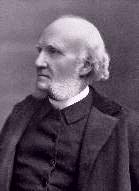
As mentioned previously, the hymn text was originally written in German and has evolved over the centuries. Some sources place the anonymous origin of the text in the twelfth century, however, researchers have not substantiated this and it may be an oral folk tradition. Other sources attribute the text to a seventeenth century German Jesuit scholar-poet, Friedrich Spee, due to its similarity to his writings. The Jesuits, or members of the Society of Jesus, are a Roman Catholic order of religious men which began in 1534. The “Beautiful Savior” title is said to have originated with its translation into English by Joseph A. Seiss, a Lutheran pastor of Moravian descent born in 1823 at Graceham, Maryland. The historical area called Moravia adjoined Silesia and is part of the current Czech Republic. It was under the rule of the Austrian Habsburg dynasty for several centuries, which could explain Joseph Seiss’ familiarity with German, and it could be assumed that his family was familiar with the neighboring Silesian folk songs. Joseph Seiss (or Seuss) was ordained a Lutheran pastor in 1848 after studying for the ministry at Gettysburg College and Seminary at Gettysburg, Pennsylvania. He is said to have served in Virginia and Maryland before becoming pastor of the Church of the Holy Communion in Philadelphia in 1874. He was active in general church leadership and authored a number of books including “The Evangelical Psalmist” in 1859. The photo below from an 1898 German Sunday School Songbook may be similar to one the Seiss family may have owned and from which it is likely Joseph translated “Beautiful Savior” about 1873. 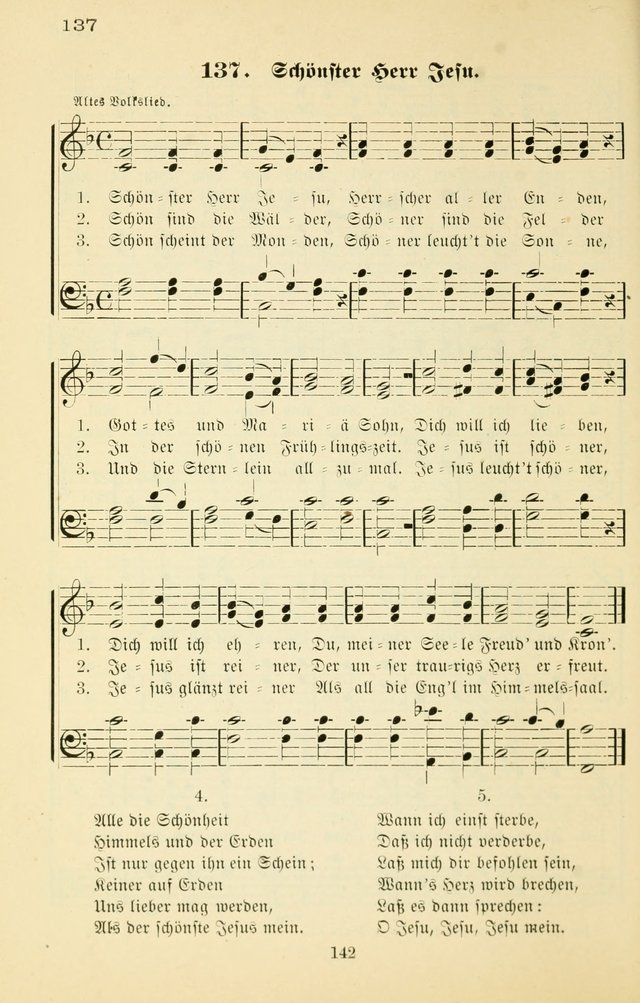
============================
Beautiful Savior - 1989 LDS Children’s Songbook Text: Fair is the sunshine, Fairer the moonlight And all the stars in heav’n above; Jesus shines brighter, Jesus shines purer And brings to all the world his love. Fair are the meadows, Fairer the woodlands, Robed in the flowers of blooming spring; Jesus is fairer, Jesus is purer. He makes the sorrowing spirit sing. Beautiful Savior! Lord of the nations! Son of God and Son of man! Thee will I honor, praise, and give glory, Give praise and glory evermore!
| |
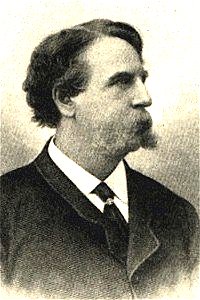 The original composer of the CRUSADER’S HYMN or ST. ELIZABETH hymn tune associated with the ‘Beautiful Savior’ text is unknown. The tune is said to be a Silesian folk song. The original composer of the CRUSADER’S HYMN or ST. ELIZABETH hymn tune associated with the ‘Beautiful Savior’ text is unknown. The tune is said to be a Silesian folk song.
Silesia, a historical region consisting mainly of the basin of the upper and middle Oder River in what is now southwestern Poland, is an area that has seen many wars, conquests and rulers. One of the principal cities, Wroclaw, is about 170 miles east of Dresden, Germany and the area has had German immigrants through its history. The tradition that the tune was sung by German Crusaders on their way to Jerusalem has a great deal of appeal, but it is no longer accepted by a number of scholars. “The Crusades” in this instance refer to Christian holy wars called by popes between 1095 and 1291 AD against external and internal enemies for the recovery of property or defense of the people. It is said that Crusaders took vows and were granted compensation for sin, or indulgences, by participating, and were also considered pilgrimages. Some limit these wars to those involving Jerusalem, but there were other wars in which crusaders took vows. One of the Jerusalem wars that could influence the story of the hymn tradition was the third crusade against the Egyptian Saladin in the twelfth century in which the German Emperor Frederick participated. As stated previously, the melody known as CRUSADER’s HYMN was first known to have been published by August H. Hoffman von Fallersleben in his 1842 volume of Silesian Folksongs. The first arrangement published in the United States is believed to have been done by Richard S. Willis in his 1850 volume of church choral works. Richard Willis was born in 1819 at Boston, Massachusetts, and is said to have graduated from Yale in 1841. He then studied music in Germany for six years, returning to work as a newspaper music critic and editor. He published several volumes of songs between 1850 and 1883. The arrangement done by Richard Willis is likely to have influenced the enduring popularity of ‘Beautiful Savior,’ and our current arrangements.
|